What is Graphology used for?
What is graphology? Graphology is a projective technique which objective is the study of personality traits of individuals through the interpretation of the so called graphic strokes of handwriting. Some people call it the “psychology of writing.”
Handwriting reveals what happens in the unconscious. Graphology allows projecting experiences, memories of the unconscious.
The beginnings of this discipline are very antique, since they date back to the Chinese in the IV century BC, who emitted some phrases that coincide with the analysis that are done nowadays.
Chinese philosopher Kuo Jo-Hsu, IV century BC outlined: “Handwriting inevitably shows whether it comes from a noble mind or from a vulgar person”
Okakura, Japanese philosopher: “Each stroke of writing expresses an entire life.”
Aristotle (384-322 BC) considered the bond between writing and thinking “writing is a symbol of speech, and the latter a symbol of mental experience.”
Egyptian civilizations considered writing a sacred matter. Romans used graphology throughout centuries and then the different civilizations and cultures have applied it to identify the essence of the person writing.
Brief History of Graphology
There was a first graphologist who came up with a work prior to Camilo Baldo’s, called Prosper Aldorisius, who invented IDEOGRAPHY. In his work “IDENGRAPHICUS NUNTIUS”, Aldorisius observed that people would write in different ways, concluding that it would suppose diversity in principles, qualities, depending on the writer’s nature.
Camilo Baldo (1622), an Italian professor of philosophy of the University of Bologna, founded the School of Graphology of Paris and published: “Trattato come de una lettera misiva si cognoscano la natura e qualitá dello scrittore” “How to know, through a handwritten letter, the personality and nature of the author.” It is the first book that relates writing to personality.
There were several scientific personalities of the era who tried to systematize Graphology, like Godofredo Guillermo Leibnitz (1646-1716), Johann Caspar Lavater (1741-1801), Johann Wolfgang von Goethe (1749-1832), Joan Louis Moreau de la Sarthe, (1771-1826), Edouard Hocquart (1787-1870).
Graphology Theory and History
Abate Jean Hippolyte Michon: The true “Father of Graphology” (1806-1881) was the one who proposed the term “Graphology”, born in France (Graphologist day is commemorated in his honor on November 21st) and founder of La Societé de Graphologie de Paris in 1871.
Jules Crépieux-Jamin (1859-1940), representative of modern Graphology, introduced the theory that states that, through trait analysis, singularity of the individual is determined as a whole, which comprises personality, character and the unconscious processes of thinking.
Ludwig Klages, (1872-1956), a German philosopher, was the one who applied the psychological theory of Gestalt to Graphology. He introduced the concept of formniveau, or shape level, as a global quality of writing. He published “Writing and Character” (1917).

Max Pulver, (1889-1952), is the one who introduced psychoanalysis into graphology and developed the theory of symbolism of space.
Girolamo Moretti (1879-1963) was a friar of the order of the Franciscans. In 191 he published “Manuale di Grafología”.
Graphology Brief History
Through Graphological Analysis it is possible to analyze patterns of writing that identify the psychological state of a person.
Graphology has been a reason for controversy since a long time ago. Those who are supportive of this technique assure that the brain sends signals along the muscles that implement writing. “It is not the hand what writes, it is the brain.”
A trained graphologist identifies the pertinent characteristics of handwriting and the way these interact. Through description of letters and the analysis of signatures, it is possible to elaborate a psychological report, confirming the behavior in the intellectual, affective and social areas.
Also read: Handwriting Analysis Chart
What is Graphology used for?
Graphological Movements
There are different Graphological Schools or Movements:
The French school of graphology describes graphic signs, letters in isolation, but a person does not reflect their personality just by the way the write the “t” bar or the “g” curl or letter “a”.
The German school, which has a gestaltic and integral vision of the perception of graphism and understands writing as a unit, studies the traits (letters), the shapes, along with the movements, the pace of the writer and, through these, they discover the nature, character, personal subconscious, the emotions of the writer and detects whether there are fixations in the phases of psychological development and analyzes the evolution of writing through time.
The Emotional school, which is based on the study of alterations that writing suffers due to emotional changes of the writer and incorporates the concept of “Lapsus Calami” to such changes that correspond to “Lapsus Linguae” in Freudian slips, have representatives like Rafael Scherman, who started it in 1912 in Germany and Kurt Honroth, a German settled in Argentina.
In order to understand what graphology is, it is essential to know the Swiss symbolic school and the Symbolism of Space of Max Pulver. Pulver was a great investigator born in Berne, 1889, who before directing his interests towards graphology and psychology, published a series of literary and philosophical works that expressed the symbolic contrasts in writing.
This investigator points out that there are archaic symbols that we carry within ourselves since the times of dawn. Mental associations that we use in a daily basis in life that guide us without being conscious about it. Human beings make some associations such as:
- Up, the sky, God, daytime, light, spirituality.
- Down, nighttime, darkness, depth, instincts.
- Right, getting together, the future, extroversion, achievements, the father.
- Left, yesterday, the past, the beginnings, the mother, fear of the ego to continue, introversion.
- Center, present, today, immediate events, me, self-control.
These symbols that we reveal in the graphic space in an unconscious way correspond to our behavior. The symbolism of space is applied to the white sheet of paper as well as to the written text. Depending on the area of the white sheet of paper that was selected to write or to draw, a different interpretation will take place.
PDF Printable page. Symbolism of Space (Max Pulver)
Explore the PDF pages on this website to find more resources you can add to your own Graphology book.
Through symbolism of space we identify the following areas:
- The Central Area, where we place the “EGO” of the theory of the psychological system developed by Freud, which represents the principle of reality and the present. It corresponds to the affective traits of the Ego in relation to itself during present time. When people write predominantly in this zone, it is interpreted that they need to be the “center” for the others.
- The Superior Area symbolizes spirituality, idealism, imagination, intellect. Freud, in his theory of the psychological system, calls it “SUPEREGO”
- The Inferior Area represents the instinctive part of the personality, the motor, the biological and concrete. To Freud, this is called ID.
- The Left Area symbolizes the regressive aspects of personality, incapacity to detach from the mother’s womb, the immature “EGO”. Primary bonds, the past, introversion and reflection of the individual are analyzed here.
- The Right Area speaks about people who have been able to detach from their mother, who generated the growth of a mature “EGO”. It refers to the affective relationships with the world, communication and the future.
Graphology Analysis with Pictures
Graphology: Handwriting Analysis examples
When analyzing a given text, we shall observe whether the handwriting is placed to the right (has a big left margin or small right margin) or to the left.
When placed to the right, it will reflect progress towards the future, towards others, a person with initiatives, and predominance of extroversion.
On the other hand, if the text is placed to the left (due to a big right margin) it will give us the idea of an individual holding on to the mother’s womb, to the family of origin, to the past and predominance of introversion.
When the text is placed in the center, in the middle area, it may be a sign of egocentrism and narcissism. This is confirmed with the individual’s signature (if placed in the center).
Areas with highly-superior text development (with a lot of text towards the upper areas) speak of individuals who are idealistic, spiritual, who are mentally active and imaginative. There, we can study the reflections and the dreams of the individual.
Areas with highly-lower text development speak of individuals who are sensual, practical, realistic, worried about the care of their own body and who look for satisfaction of immediate necessities.
Absolutely everything on a text is coated in the symbolism of space. From the relationship between written and empty spaces to the description of the letters each one individually. According to the symbolism of graphic space, behavior is reflected in writing.
Graphologists consider writing as a graphic record of the writer and not only as written language. In the movements of handwriting, individuals express their type of intelligence, sensitivity, tendencies, impulses, reactions, in short: they express their personality.
Graphology: Benefits
What is its utility nowadays?
What is graphology? Graphology is a tool to know ourselves and who surround us. Graphological analysis has several applications. The possibility to get to know people in depth through a method that is apparently so simple, such as the analysis of the characteristics of handwriting, gives graphology the opportunity of being used in many fields of knowledge.
In the field of psychology, graphology is a test of personality and a deep investigation of the human being. It contributes to patient diagnosis, to the identification of the typology and alterations of personality.
The analysis of modifications that writing suffers along a treatment, allows to know the evolution of a patient, given that graphical symbols change their aspect for the same individual, along with the evolution of their psychism.
In clinical medicine and psychiatry, graphological tests guide the medicine professional in the diagnosis of mental, psychomotor and somatic illnesses and in the records of evolution of treatments. Through graphopathology, physical issues may be detected even before they appear. Comparative analysis of a person, allows the diagnosis of breathing, circulatory and motility disorders prematurely.
Graphology Uses
What is graphology? In education, although teachers teach children to write according to a calligraphic model, it is observed that not all students write the same way. Each person writes with a type of handwriting of their own and directly connected to their personality. Graphology contributes to know students in their different areas of their personality, their temper, and their hidden psychological complexes, which allow to understand the reason for their academic performance and behavior.
It also helps verify progress and regression of each student through the systematic study of writing and to detect situations of risk.
Through graphotherapy, which is a graphical psychotherapy treatment and also an invaluable tool that educational psychologists count on, different aspects are treated which are related to children with difficulties in paying attention, dysgraphia, social behavior disorders such as shyness, isolation, aggressiveness and affective disorders, among others. It is possible to modify the negative traits through proper graphical exercises meant for correction.
These may be the solution to many small personality conflicts. This is also applied to vocational and professional orientation, gathering the skills of the students. The high cost and great negative impact of deficient hiring processes, promote the acquiring of graphological analysis to personnel-selection processes.
Personnel-selection agencies apply graphological tests in order to make the first selection of candidates that are more suitable for the required position and, subsequently, they write a full report of the ideal candidates. It is an economical and fast technique that brings great results.
The ads on job applications that require a handwritten presentation are the ones that will include a graphologist in the selection process.
Graphology also makes it possible to redistribute human resources correctly throughout the company’s organization chart through the study of personnel handwriting.
Graphology Meaning
There is also historical graphology, since any character that lived and left graphical prints may be brought back to life by the graphologist, providing a new dimension of the same.
In premarital orientation there are couple, partner, and public relation compatibilities.
Judicial graphology is used in criminology, as auxiliary of justice, in order to determine the personality of criminals, changes in the psyche that affect writing, in order to confirm the truthfulness of testimonies provided by suspects. The police and lawyers confirm signature, text, and will counterfeits, among others.
What does Graphology study?
It has been proven that some letters have more importance than others due to the way strokes are performed or the way in which they connect one to another, which confirms what has been analyzed in the text. Letters g, t, a, d, r,m and i are specially studied.
The Signatures is another important element in graphology. The signature is the most authentic expression of personality. But let us keep in mind that a signature in isolation may reveal very little information. The text and the signature must be analyzed together in order to arrive to reliable interpretations.
Read also: Handwriting Analysis Signature, How to make a good signature
Writing is a means of communication with the outside world. It is the means through which we introduce to each other; therefore, text is a kind of visit card that we use in social relations, which indicates our attitude and behavior towards others. From the psychological point of view, text symbolically represents the “social ego”, in other words, the way in which the individual shows himself in society, in his social and professional environments. The signature expresses the “intimate ego”, how the individual sees himself, his ambitions, complexes, his superiority or inferiority feelings, his dominant traits, and his character. Within the signature, we distinguish the name, as his real ego, the last name, as the family image and the signature itself, which is the scrawl that usually goes together with the signature that symbolizes the border where the intimate ego is placed.
Out of the comparison made between text and signature from the writer, relevant conclusions shall be obtained.
Like Matilde Ras says: “Writing is the enchanted mirror where the mysterious face of the soul is reflected.”
Graphology: Wonderful science that, in hand with psychology, takes us to the depths of our being.
Keep navigating this website to continue discovering what graphology is and its usage as a tool for self-awareness and personal development.


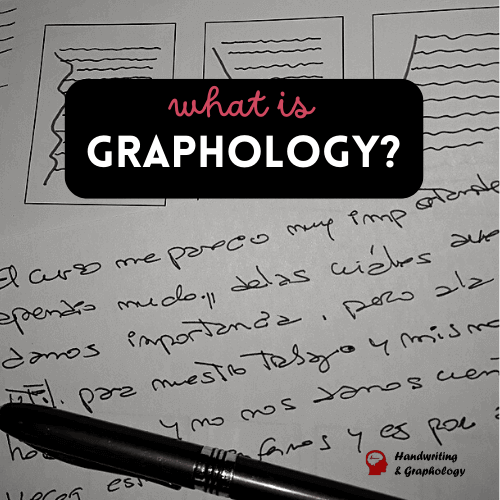
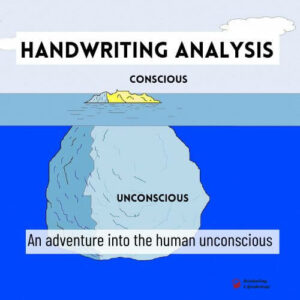
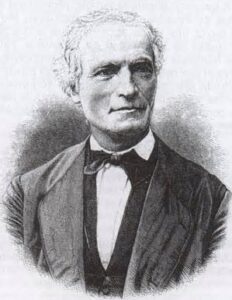
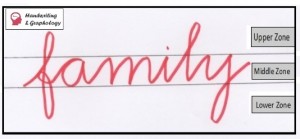
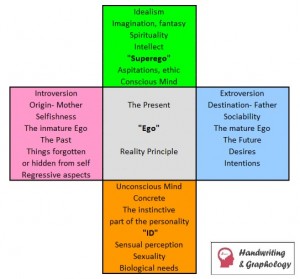
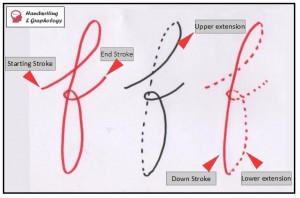
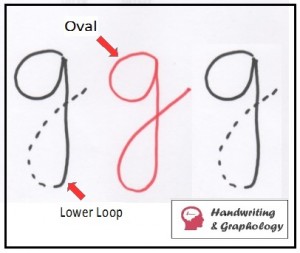
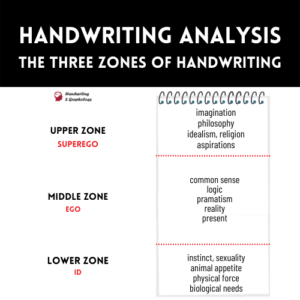


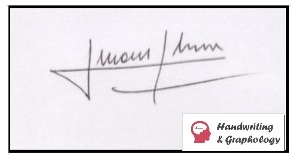
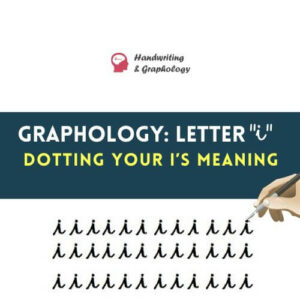


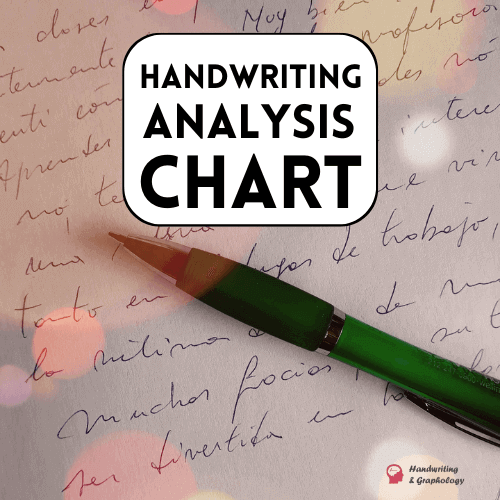
I am searching for an historical graphologist, who could help me in discerning the
personalities of some persons in my enormous genealogical archives. I am about to
distribute a part of these papers and want information about what this would cost so I
can make copies to hold for this analysis. Thank you.
Very nice and informative